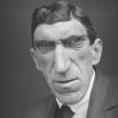
Peter Berry
-
Posts
3 -
Joined
-
Last visited
Reputation Activity
-
 Peter Berry got a reaction from buggz in Can you shoot the international space station with a Micro Four Thirds camera?
Peter Berry got a reaction from buggz in Can you shoot the international space station with a Micro Four Thirds camera?
Here's a sort of uber-imaging setup with a 9.25" aperture/2350mm f/10 Schmidt-Cassegraine compound scope with an afocal imaging setup about 15 years ago: Sony TRV-900 3-CCD VHF camcorder with full man. controls, SS down to 1/2 sec connected to a telescope eyepiece (this is the "afocal" setup) which is connected to a 3X TC (Barlow lens in astro lingo). The Jupiter images filled about 2/3 frame height with the Sony at about 10X zoom. This method makes finding the object pretty easy zoomed out, works well in spite of the huge # of optical elements involved, and zoomed-in gives enormous mag. - maybe ~ 20-25 meters EFL @ f/100?
The film clips were processed in Registax, which selected the sharpest (due to brief reductions in atmospheric turbulence), stacked 400-600, which accentuated common detail features, than a complex multistage "wavelet" sharpening routine. The first Jupiter image was from the steadiest "seeing" conditions I've ever had - in the Florida Panhandle. The Mars image at it's historic closest approach in 9/3/03, from southern Mexico.
-
 Peter Berry reacted to Roberto Tolin Sommer in Can you shoot the international space station with a Micro Four Thirds camera?
Peter Berry reacted to Roberto Tolin Sommer in Can you shoot the international space station with a Micro Four Thirds camera?
Another attempt with the GH3 and the 1.000mm catadripotic tele. Jupiter and four moons, Europa, Io, Ganimede and Callisto.
-
 Peter Berry reacted to Roberto Tolin Sommer in Can you shoot the international space station with a Micro Four Thirds camera?
Peter Berry reacted to Roberto Tolin Sommer in Can you shoot the international space station with a Micro Four Thirds camera?
5 years ago i made a photo of the ISS with my GH3. I made it in photo mode with a old russian 1.000mm catadioptric lens. It was incredibly difficult to find the tiny point in the viewfinder and mantain the hight speed across the sky. I made a few dozens shots and one was sharp. It was pure luck at 1/125s. This is a 100% pixels crop.
-
 Peter Berry reacted to Vesku in Can you shoot the international space station with a Micro Four Thirds camera?
Peter Berry reacted to Vesku in Can you shoot the international space station with a Micro Four Thirds camera?
It is easy to attach m4/3 camera to telecsope like in this video:
-
 Peter Berry reacted to Andrew Reid in Can you shoot the international space station with a Micro Four Thirds camera?
Peter Berry reacted to Andrew Reid in Can you shoot the international space station with a Micro Four Thirds camera?
This video of the international space station passing the moon has become quite famous on the internet, demonstrating as it does the unusual abilities of the Nikon P900, a super-zoom consumer camera which costs around $700.
Can we do better with a 'proper' camera?
Read the full article
-
 Peter Berry got a reaction from noplz in Can you shoot the international space station with a Micro Four Thirds camera?
Peter Berry got a reaction from noplz in Can you shoot the international space station with a Micro Four Thirds camera?
Andrew, the problem with a much larger sensor than the tiny video chips of yore is that you have to use a significant zoom lens on the camera (or a long FL prime) to couple to the scope eyepiece/TC train. I've tried my GH4 w/ the compact Panny 14-140, but just too bulky, with a relatively small circular image shown, or no focus-able image all. My next iteration was the Sony HC1 FHD camcorder, but never found suitable astronomic "seeing" to warrant the time and effort of setup with the 9.25" f/10 scope.
What I have done with it is total solar eclipse recording of solar flares and detached prominences, but with a very compact and excellent 4" 1000mm f/10 reflex scope w/ tube length only 8" using an eyepiece coupled to the Sony lens, but no TC. First pic below with the VGA res. TRV-900 of the striking detached prominence - Africa '01; the second with the FHD Sony of the "hedgerow prominences" I've not seen imaged in this detail - Turkey '06. For the recent eclipse I viewed and imaged from Madras, Oregon, I used my GH5, Canon 100-400-II w/ 2X TC shooting 4K in ETC crop mode (2.7X crop factor), plus 2X dig zoom or this to 1080p res and 5.4X factor = 4320mm EFL. Tech. screwups on my part nixed any views of the pretty unimpressive flares at this mag.
-
 Peter Berry got a reaction from Jonny in Can you shoot the international space station with a Micro Four Thirds camera?
Peter Berry got a reaction from Jonny in Can you shoot the international space station with a Micro Four Thirds camera?
Here's a sort of uber-imaging setup with a 9.25" aperture/2350mm f/10 Schmidt-Cassegraine compound scope with an afocal imaging setup about 15 years ago: Sony TRV-900 3-CCD VHF camcorder with full man. controls, SS down to 1/2 sec connected to a telescope eyepiece (this is the "afocal" setup) which is connected to a 3X TC (Barlow lens in astro lingo). The Jupiter images filled about 2/3 frame height with the Sony at about 10X zoom. This method makes finding the object pretty easy zoomed out, works well in spite of the huge # of optical elements involved, and zoomed-in gives enormous mag. - maybe ~ 20-25 meters EFL @ f/100?
The film clips were processed in Registax, which selected the sharpest (due to brief reductions in atmospheric turbulence), stacked 400-600, which accentuated common detail features, than a complex multistage "wavelet" sharpening routine. The first Jupiter image was from the steadiest "seeing" conditions I've ever had - in the Florida Panhandle. The Mars image at it's historic closest approach in 9/3/03, from southern Mexico.
-
 Peter Berry got a reaction from Mark Tincho in Can you shoot the international space station with a Micro Four Thirds camera?
Peter Berry got a reaction from Mark Tincho in Can you shoot the international space station with a Micro Four Thirds camera?
Here's a sort of uber-imaging setup with a 9.25" aperture/2350mm f/10 Schmidt-Cassegraine compound scope with an afocal imaging setup about 15 years ago: Sony TRV-900 3-CCD VHF camcorder with full man. controls, SS down to 1/2 sec connected to a telescope eyepiece (this is the "afocal" setup) which is connected to a 3X TC (Barlow lens in astro lingo). The Jupiter images filled about 2/3 frame height with the Sony at about 10X zoom. This method makes finding the object pretty easy zoomed out, works well in spite of the huge # of optical elements involved, and zoomed-in gives enormous mag. - maybe ~ 20-25 meters EFL @ f/100?
The film clips were processed in Registax, which selected the sharpest (due to brief reductions in atmospheric turbulence), stacked 400-600, which accentuated common detail features, than a complex multistage "wavelet" sharpening routine. The first Jupiter image was from the steadiest "seeing" conditions I've ever had - in the Florida Panhandle. The Mars image at it's historic closest approach in 9/3/03, from southern Mexico.
-
 Peter Berry got a reaction from noplz in Can you shoot the international space station with a Micro Four Thirds camera?
Peter Berry got a reaction from noplz in Can you shoot the international space station with a Micro Four Thirds camera?
Here's a sort of uber-imaging setup with a 9.25" aperture/2350mm f/10 Schmidt-Cassegraine compound scope with an afocal imaging setup about 15 years ago: Sony TRV-900 3-CCD VHF camcorder with full man. controls, SS down to 1/2 sec connected to a telescope eyepiece (this is the "afocal" setup) which is connected to a 3X TC (Barlow lens in astro lingo). The Jupiter images filled about 2/3 frame height with the Sony at about 10X zoom. This method makes finding the object pretty easy zoomed out, works well in spite of the huge # of optical elements involved, and zoomed-in gives enormous mag. - maybe ~ 20-25 meters EFL @ f/100?
The film clips were processed in Registax, which selected the sharpest (due to brief reductions in atmospheric turbulence), stacked 400-600, which accentuated common detail features, than a complex multistage "wavelet" sharpening routine. The first Jupiter image was from the steadiest "seeing" conditions I've ever had - in the Florida Panhandle. The Mars image at it's historic closest approach in 9/3/03, from southern Mexico.
-
 Peter Berry got a reaction from kaylee in Can you shoot the international space station with a Micro Four Thirds camera?
Peter Berry got a reaction from kaylee in Can you shoot the international space station with a Micro Four Thirds camera?
Here's a sort of uber-imaging setup with a 9.25" aperture/2350mm f/10 Schmidt-Cassegraine compound scope with an afocal imaging setup about 15 years ago: Sony TRV-900 3-CCD VHF camcorder with full man. controls, SS down to 1/2 sec connected to a telescope eyepiece (this is the "afocal" setup) which is connected to a 3X TC (Barlow lens in astro lingo). The Jupiter images filled about 2/3 frame height with the Sony at about 10X zoom. This method makes finding the object pretty easy zoomed out, works well in spite of the huge # of optical elements involved, and zoomed-in gives enormous mag. - maybe ~ 20-25 meters EFL @ f/100?
The film clips were processed in Registax, which selected the sharpest (due to brief reductions in atmospheric turbulence), stacked 400-600, which accentuated common detail features, than a complex multistage "wavelet" sharpening routine. The first Jupiter image was from the steadiest "seeing" conditions I've ever had - in the Florida Panhandle. The Mars image at it's historic closest approach in 9/3/03, from southern Mexico.



